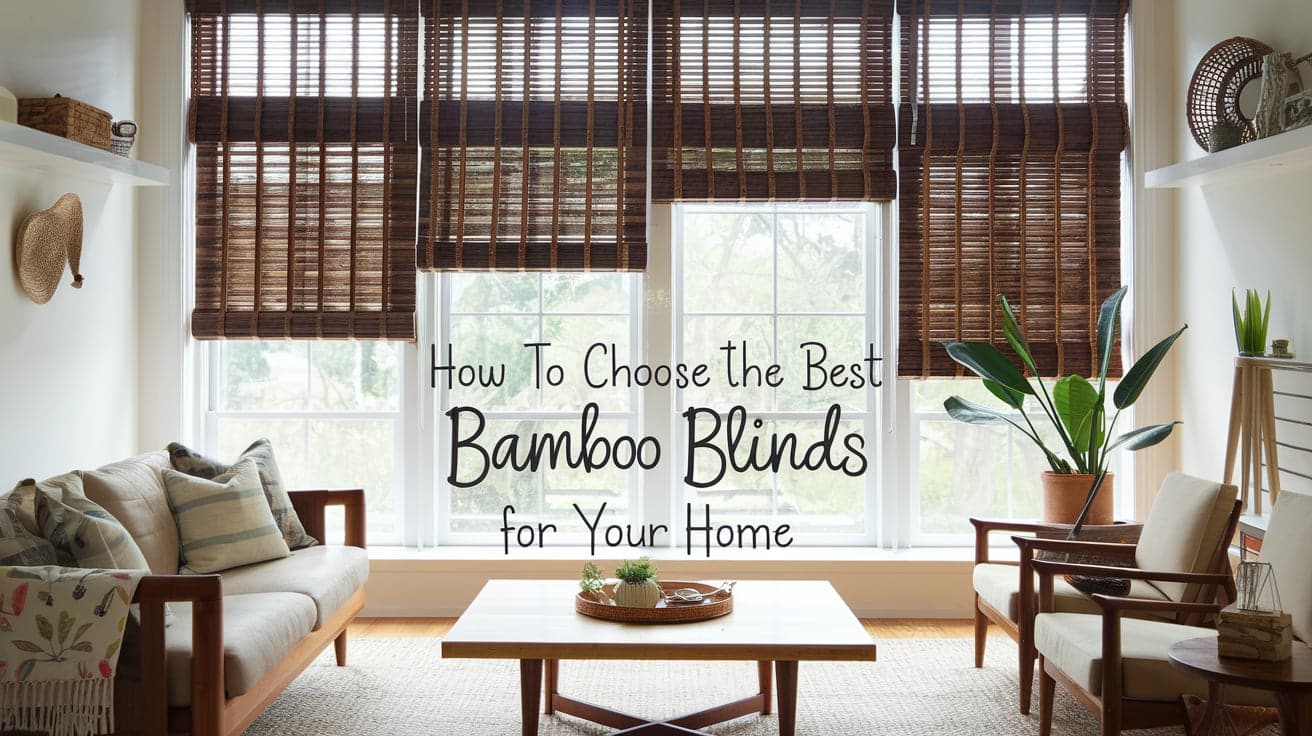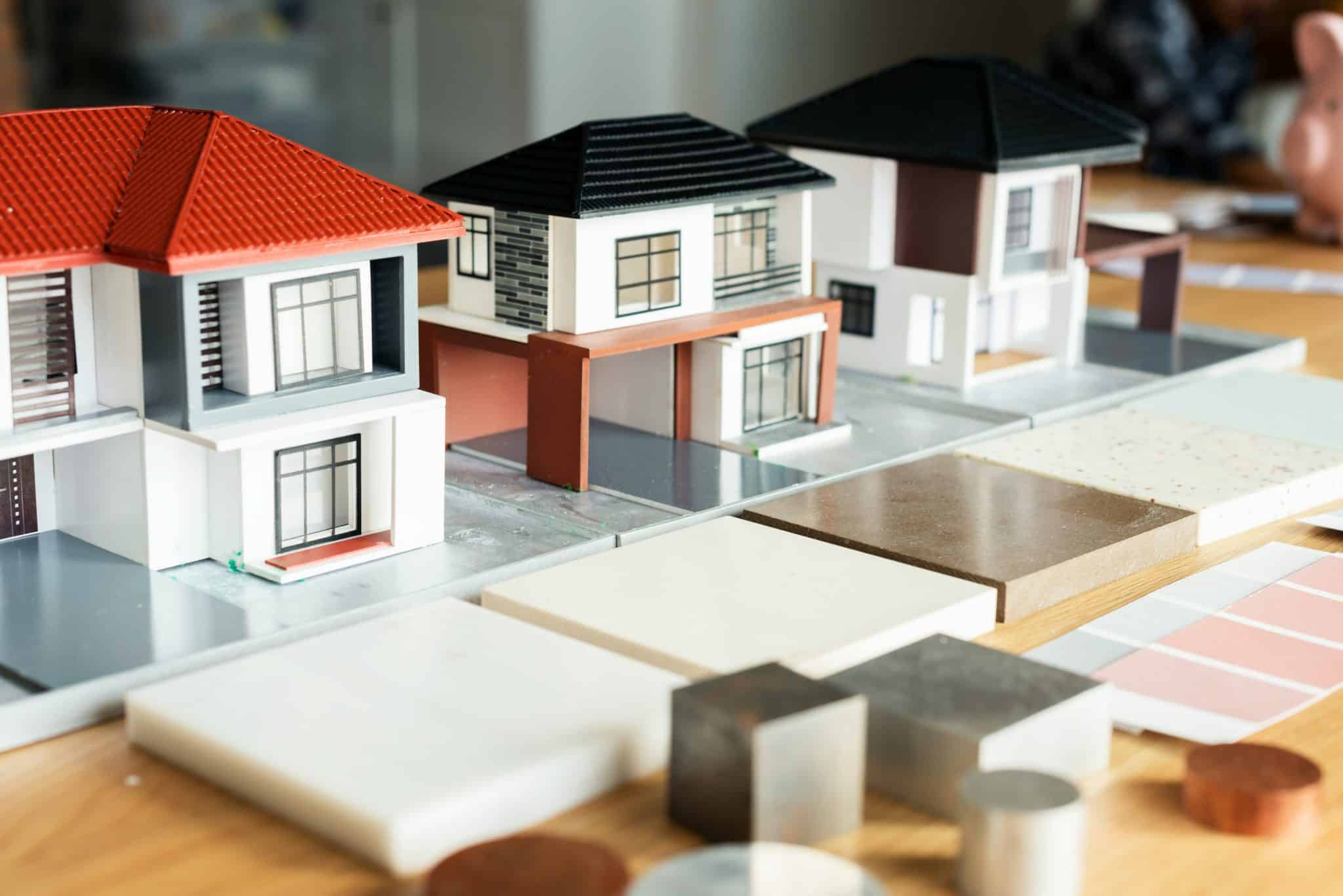Looking for window treatments can be overwhelming, especially with many choices today.
I know this firsthand. I spent weeks comparing different options before learning that bamboo blinds offer the perfect mix of style and function for my home.
I’ve tested and researched extensively to identify the most reliable bamboo blinds that combine quality materials with practical features.
This guide will help you avoid the common mistakes people make when selecting window coverings.
In this article, I’ll share everything you need to know about choosing bamboo blinds, from understanding material quality to finding the right size and style.
You’ll learn exactly what to look for, which questions to ask, and how to pick blinds that will serve you well for years.
Why Choose Bamboo Blinds?
1. Eco-Friendly Option
Bamboo blinds are a responsible choice for home decor. These window coverings are made from fast-growing bamboo plants, which replenish quickly and need minimal water to thrive.
By selecting bamboo blinds, you’re making an environmentally conscious decision that helps reduce the strain on forest resources.
2. Aesthetic Appeal
Bamboo’s natural appearance brings warmth and character to any room.
Each blind features unique patterns in the wood grain, creating subtle variations that add interest to your windows. Bamboo’s natural golden-brown tones complement many interior styles, from modern to traditional.
3. Durability and Longevity
When properly maintained, bamboo blinds can last for many years. The material naturally resists warping and holds its shape over time.
Unlike synthetic alternatives, bamboo becomes stronger as it ages, making it a smart long-term investment in your home.
4. Natural Light Control
Light management is another key benefit of bamboo blinds. The bamboo’s woven structure allows you to adjust the sunlight entering your space.
During bright afternoons, you can lower the blinds to create a gentle, filtered effect that reduces glare while maintaining a pleasant level of natural brightness.
This feature helps protect your furniture from sun damage while keeping your rooms comfortable throughout the day.
Top Bamboo Blinds on the Market
1. Best Overall
Our top choice is the Smith & Noble Natural Bamboo Shade, which offers excellent build quality and reliable performance.
These blinds use high-grade bamboo with consistent coloring and tight weaving, providing function and visual appeal. The hardware components show careful attention to detail, and the cordless lifting mechanism works smoothly.
2. Best for Privacy
The Radiance Bamboo Privacy Blinds excel with dense weave patterns and an optional blackout liner for those seeking maximum privacy.
The tight construction prevents gaps between slats, ensuring your space stays private day and night. The additional liner also helps with temperature control and light blocking.
3. Best Budget Option
Budget-conscious shoppers should consider the Lewis Hyman Roll-up Bamboo Shade. Despite its lower price point, this option maintains good quality standards and includes all necessary mounting hardware.
The simple roll-up design makes installation quick and straightforward.
4. Best for Custom Fit
The Home Decorators Collection Custom Bamboo Blinds offer made-to-measure solutions when standard sizes don’t fit your windows. You can specify exact dimensions, and their measuring guide helps ensure accuracy. They also provide sample materials to help you choose the right color and weave pattern.
Factors to Consider When Buying Bamboo Blinds
1. Size and Fit
Proper measurements are essential for the success of your bamboo blind installation.
Measure your window dimensions carefully, including width and height. Remember to account for mounting hardware and decide whether you want an inside or outside mount.
This attention to detail ensures that your blinds fit perfectly and function as intended.
2. Material Quality
The quality of bamboo used in your blinds affects their performance and lifespan. Look for blinds made from mature bamboo stalks, which offer better stability and resistance to environmental changes.
Could you check that the bamboo has been properly treated to prevent issues with moisture and insects?
3. Style and Design Options
Bamboo blinds come in various weave patterns and color treatments. Some feature tight weaves for privacy, while others have wider spaces between slats for better views.
The color options range from light natural tones to darker stained finishes, letting you match your existing decor perfectly.
4. Light Filtering Ability
Please look at how much light control you need in each room. Some bamboo blinds include additional liner options that block more light when needed.
This feature proves particularly useful in bedrooms or media rooms where you might want more darkness at certain times.
5. Ease of Maintenance
Keeping your bamboo blinds clean should be straightforward.
Please look for designs you can easily dust with a soft cloth or vacuum with a brush attachment. Some styles allow for gentle spot cleaning when needed.
Understanding the maintenance requirements helps you choose blinds that match your cleaning routine and lifestyle.
Step-by-Step Guide to Installing Bamboo Blinds
STEP 1: Prepare Your Tools and Materials
Prepare Your Tools and Materials Before starting your installation, gather all necessary equipment in one place. You’ll need a measuring tape, pencil, level, drill with appropriate bits, and a screwdriver.
Your bamboo blinds should come with mounting brackets and screws. If installing it into drywall, you might need additional wall anchors for proper support.
STEP 2: Measure and Mark
Measure and Mark Begin by thoroughly cleaning your window area. Carefully measure the width of your window space, noting any variations. Please check the window frame depth for inside mounting to ensure it fits correctly.
If doing an outside mount, determine and mark your desired extension points. Use your level to create straight alignment marks for the brackets, and verify all measurements twice.
STEP 3: Install the Brackets
Install the Brackets. Position your brackets against the marked spots and confirm their placement. Make small pencil marks through the screw holes to guide your drilling.
Create pilot holes at each marked location. For drywall installations, insert appropriate wall anchors before securing the brackets with screws. Check that your brackets sit perfectly level and feel sturdy when touched.
STEP 4: Mount the Headrail
Could you remove your bamboo blinds from their packaging and locate the front and back sides of the headrail?
Line up this headrail carefully with your installed brackets. Push upward with firm, even pressure, until you hear the locking mechanism engage.
You can gently pull down to test the security of your mount. The headrail should be straight and level across the window.
STEP 5: Attach Safety Devices
Install the cord cleat at least 64 inches from the floor for child safety. Secure any hanging cords using the provided safety equipment.
Test the cord mechanism multiple times to ensure smooth operation. Ensure each safety feature functions as intended to prevent accidents.
STEP 6: Final Adjustments
You can lower your blinds to their full length and check for even hanging on both sides.
Check that the bottom rail is level and adjust if needed. Pull the blinds up and down several times to test the lifting mechanism. The motion should feel smooth and consistent.
If your blinds come with a valance, could you attach it now for a finished appearance?
STEP 7: Complete Inspection
Please complete a thorough inspection of all installed components.
Verify that every screw sits tight and secure. Test the lifting mechanism multiple times from different positions. Make sure all safety features remain firmly in place.
Please check that the cords wrap properly and that the blinds move evenly when raised or lowered.
Professional Installation Considerations
Some situations may require professional installation help.
Consider hiring an expert for windows exceeding 70 inches in width, difficult-to-reach locations, special mounting requirements, multiple window installations, or unusual shapes.
Professional installers have the specialized tools and experience to handle these challenging scenarios.
Maintenance Tips for Bamboo Blinds
Regular cleaning keeps bamboo blinds looking fresh and extends their life.
Use a feather duster or vacuum with a soft brush attachment weekly to remove surface dust. A damp cloth works well for stuck-on dirt, but avoid soaking the bamboo.
Protect your blinds from excess moisture, which can cause warping or mold growth.
Consider adding a protective coating to bathrooms or kitchens to guard against humidity. If you have windows open during wet weather, keep the blinds raised.
Long-term care includes periodic checks of all moving parts. For example, please look over the cords, pulleys, and brackets for signs of wear every few months.
Tighten any loose screws promptly. If you notice fraying cords or wearing hardware, replace these components before they fail.
Apply wood conditioning oil annually to maintain the bamboo’s natural look and prevent drying or cracking. Choose a product specifically meant for bamboo or natural wood.
This treatment helps preserve the material’s strength and appearance over time.
Conclusion
Selecting bamboo blinds comes down to understanding your specific needs and space.
Careful consideration of size, material quality, and light control features can help you find window coverings that enhance your home’s comfort and style.
Remember that proper measurements and installation significantly affect how your blinds function.
Assess the humidity levels in each room, especially in bathrooms and kitchens, to ensure the longevity of your bamboo blinds.
Bamboo blinds’ natural warmth and texture can transform any room while providing practical benefits.
By following the guidelines in this article, you’ll be well-equipped to make an informed choice that meets your needs for both functionality and appearance.















